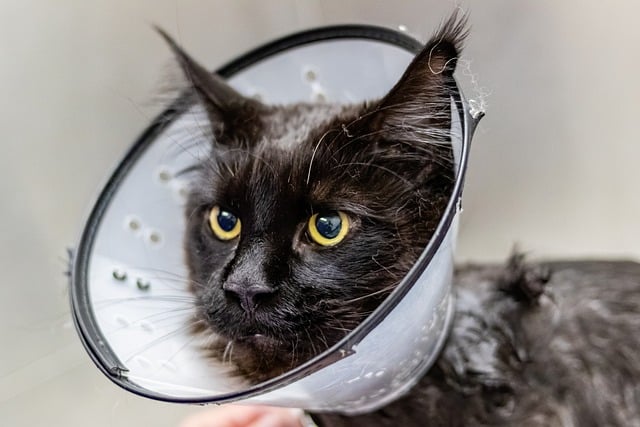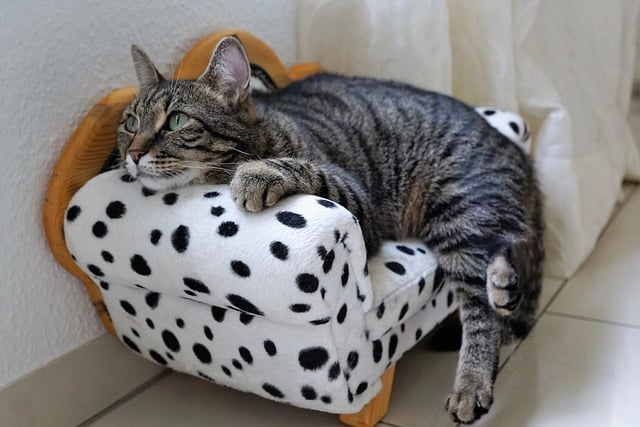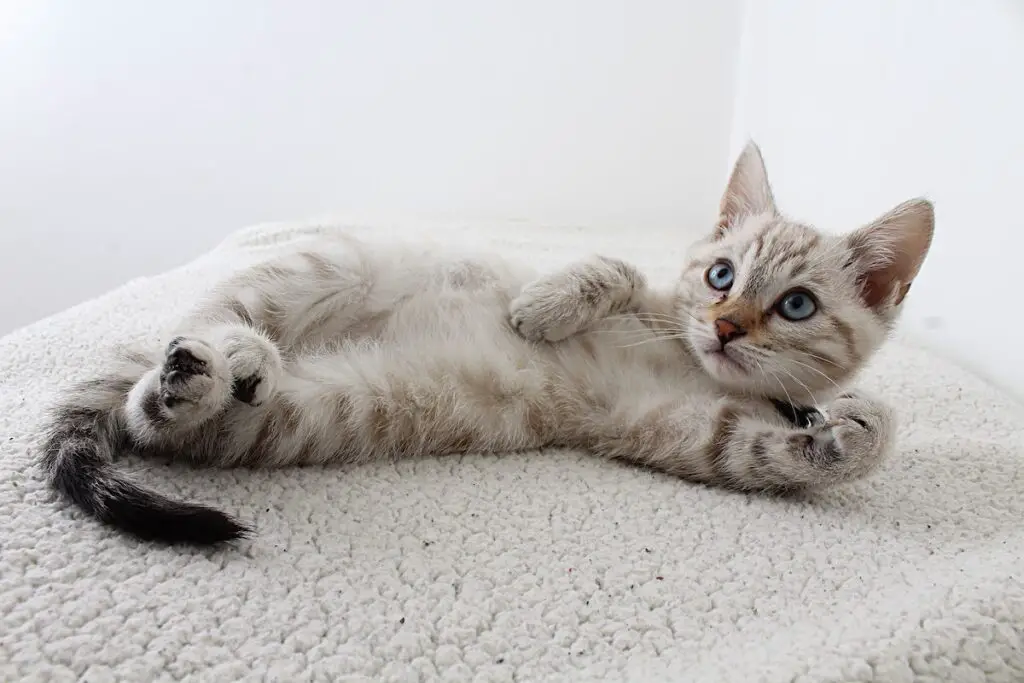Cats are curious and active creatures, which can lead to them picking up injuries from time to time. When this happens, it is important to know what to do in order to help your cat heal as quickly as possible. But the question remains: do cat injuries heal on their own?
The short answer is yes, many cat injuries will heal on their own with the right care and attention. However, it is important to understand the type of injury and the best course of action to take. Read on to find out more.
How to Tell if Your Cat has an Injury
Are you worried that your beloved cat has been injured? It can be difficult to tell if your pet is in pain or has suffered an injury, especially if they are the type of feline that hides its illnesses. Here are a few tips to help you detect if your cat has been injured and what to do if they have been.
- Look for visible signs of injury. The most obvious sign of an injury will be visible evidence, such as cuts, scrapes, or bruises. If you spot any of these, take your cat to the vet as soon as possible.
- Monitor their behavior. If your cat is acting differently than usual, it could be a sign of an injury. Look for changes in their energy levels, appetite, and grooming habits. If your cat is sleeping more than usual, limping, or not playing as much, they may have an injury that needs attention.
- Check for heat or swelling. If your cat has been injured, they may experience swelling or heat in the affected area. Feel gently around the area of the suspected injury to see if there is any warmth or swelling.
If you suspect that your cat has an injury, it’s best to take them to the vet right away. Your vet can perform an examination and provide the proper treatment to help your cat recover. Additionally, they can provide advice on how to prevent future injuries. Make sure to keep your cat’s regular check-ups to ensure their continued health and wellbeing.

Types of Injuries That Can Heal on Their Own
While cats are resilient animals, they are still prone to injuries and can experience everything from minor scrapes and bruises to more severe wounds that require medical attention. Fortunately, there are some types of cat injuries that can heal on their own.
- Lacerations & Abrasions: These are minor cuts and scrapes that can occur when your cat is playing or exploring. These wounds are usually fairly shallow and, depending on the size and location, may not require medical treatment. Cleaning the wound with a mild antiseptic and then monitoring it for signs of infection is all that is typically necessary.
- Bite Wounds: Cats are prone to fighting and may receive bite wounds in the process. These wounds can be painful and may even require stitches, depending on the severity. But if the bite is small and shallow, it can often heal on its own without the need for medical intervention.
- Sprains & Strains: Cats are agile animals that love to jump and climb, and they can sometimes suffer from sprains and strains due to overexertion or injury. These can often be treated at home with rest and anti-inflammatory medications. If the pain persists, however, a visit to the vet is recommended.
- Broken Nails: Cats are active animals and may sometimes break their nails when playing. This can be painful, but it is rarely a cause for concern. Broken nails will eventually fall off on their own and can be replaced with a new one that will grow back in time.
It is important to note that any injury that is deep, large, or accompanied by severe symptoms, such as excessive bleeding, swelling, or fever, should be seen by a veterinarian as soon as possible. A professional can determine the best course of action and make sure your cat is taken care of properly.
Types of Injuries That Require Veterinary Care
When an injury occurs, it is important to know when to seek veterinary care for your kitty. Some cat injuries do not heal on their own.
- Trauma-Related Injuries – Trauma-related injuries are the most common cause of veterinary visits for cats. Trauma can occur from a sudden fall, being hit by a car, or a fight with another animal. If your cat experiences any type of trauma, it is important to seek veterinary care immediately. Common signs of trauma include limping, bruising, swelling, or any type of bleeding.
- Abscesses – An abscess is an infection that can occur from a bite wound or other type of skin injury. Abscesses can cause swelling, redness, discharge, and pain in the affected area. It is important to seek veterinary care for abscesses as soon as possible to prevent the infection from spreading and causing further damage.
- Foreign Bodies – Cats are curious creatures, and they often get into things that they shouldn’t. If your cat has ingested or inhaled a foreign body such as a piece of string, mouse toy, or toy part, they may require veterinary care. Common signs of a foreign body include vomiting, difficulty eating or drinking, and abdominal pain.
- Eye Injuries – Eye injuries in cats can range from mild to severe, and they should always be evaluated by a veterinarian. Common signs of an eye injury include redness, swelling, discharge, and pain. If your cat is exhibiting any of these signs, it is important to seek veterinary care immediately.
- Fractures – Fractures can occur from a fall, a fight with another animal, or a car accident. If you suspect your cat has a fracture, it is important to seek veterinary care immediately. Common signs of a fracture include limping, swelling, and tenderness in the affected area.
By being aware of the types of injuries that require veterinary care for your cat, you can ensure that your beloved pet receives the care they need. If you notice any of the signs listed above, it is important to seek veterinary care immediately. With prompt veterinary care, most injuries can be effectively treated and your cat can make a full recovery.

How to Help Your Cat Heal
If your cat is dealing with an injury or illness, you may be feeling overwhelmed and unsure of how to help them heal. Fortunately, there are certain steps you can take to ensure your cat’s health and wellbeing.
1. Create a Safe Environment
Creating a safe environment is essential for your cat’s recovery. If your cat is dealing with a physical injury, make sure they have a comfortable place to rest and heal. Provide them with a quiet, low-traffic area that is out of reach of other pets. If your cat is dealing with a serious illness, such as cancer, they may need additional support. Talk to your vet about how to best care for your cat and keep them as comfortable as possible.
3. Provide Nutritious Meals
Proper nutrition is key to helping your cat heal. Make sure your cat is receiving the necessary vitamins and minerals to support their recovery. Talk to your vet about the best diet for your cat’s needs. If your cat is underweight or has difficulty eating, your vet may recommend a special diet.
3. Give Supportive Care
Providing supportive care can go a long way in helping your cat heal. If your cat is dealing with a physical injury, make sure to keep the affected area clean and bandage it if needed.
To help speed up the healing process, it is important to keep the cat’s wound clean and dry. The wound should be washed with a mild antiseptic solution and then dried off. Use antibiotics such a Neosporin to keep the area from getting infected. It is also important to make sure the wound is not exposed to dirt or bacteria, as this can lead to an infection.
If your cat is dealing with a serious illness, make sure to talk to your vet about the best course of action. This may include providing medications or other treatments.
4. Show Love and Affection
Showing your cat love and affection can help them heal. Spend quality time with your cat and provide them with hugs and cuddles. Talk to them in a soothing voice and let them know that you are there for them.
By following these steps, you can help your cat heal and feel their best. With the right care and support, your cat can make a full recovery and live a long, healthy life.
Conclusion: Do Cat Injuries Heal on their Own?
It is important to remember that not all cat injuries can heal on their own. If you notice any signs that your cat is injured, it is important to take them to the vet for an examination. With the right care and attention, many cat injuries can heal without the need for medical intervention.
FAQs: Do Cat Injuries Heal on Their Own?
The answer to this question will depend on the severity of the wounds, as well as the type of treatment that is used. In general, minor cuts and scratches can take anywhere from a few days to a couple of weeks to heal. These injuries usually involve minor bleeding, and the cat may experience some discomfort and pain.
More serious wounds, like those that involve punctures, deep lacerations, or abscesses, will take longer to heal. These types of wounds may require stitches, antibiotics, and even surgery to treat. Depending on the severity, these wounds can take anywhere from four to six weeks to heal.
It is important to keep in mind that cats cannot be expected to heal from their wounds as quickly as humans do. Cats have a much slower metabolism and healing process than humans, so it is important to be patient and give them time to heal.
Broken bones in cats can be a serious problem, but the good news is that cats are resilient and can often heal on their own. Depending on the severity of the injury and the cat’s overall health, broken bones can heal without the need for surgery or other medical intervention.
When a cat breaks a bone, the first step is to get them to a veterinarian for a thorough examination. The vet will be able to assess the severity of the fracture and determine the best course of treatment. If the fracture is minor, the vet may recommend a period of rest and confinement. This will give the bone time to heal and is often the most successful course of action.
Rest and confinement means that the cat should be kept in a safe, warm, and quiet environment. This may mean confining the cat in a small room or area to prevent them from running, jumping, or playing. It is also important to ensure that the cat does not have access to any stairs or furniture that could potentially worsen the injury.
Your vet may also prescribe medications to help reduce pain and inflammation. Painkillers are especially important for cats that are in a lot of pain and cannot rest properly. It is important to give the medications as directed and follow up with your vet if you are concerned about the healing process.
In some cases, cats may also benefit from physical therapy or even surgery. Physical therapy can help cats regain strength and mobility in the affected area, while surgery may be necessary to repair a more severe fracture. Surgery is always a last resort, and it is important to discuss the pros and cons with your vet before making a decision.
Cats can and do heal from wounds without stitches, but it depends on the severity of the wound. Minor cuts and scrapes can often heal on their own, while deeper or more serious wounds may require veterinary attention.
If the wound is minor, cleaning the wound with warm water and a mild soap can help prevent infection and aid in the healing process. For deeper wounds, it’s important to take your cat to the vet to determine if stitches are necessary.
It’s also important to keep an eye on the wound as it heals. Watch for any signs of infection, such as redness, swelling, or discharge. If the wound does not seem to be healing properly, or if your cat is showing signs of pain or distress, be sure to contact your vet.
Aside from cleaning the wound, there are a few things you can do to help your cat heal without stitches. Providing your cat with a clean, comfortable place to rest, as well as a nutritious diet, can help promote healing. You may also choose to use a topical wound-healing cream to help speed up the process.
Cats are incredibly stoic creatures, so it can be difficult to tell when they’re in pain. However, there are some subtle signs that can indicate discomfort or pain, such as changes in their posture. If your cat is sitting differently than normal, it may be a sign that something is wrong.
When cats are in pain, they tend to sit with their legs tucked underneath them. This is a natural instinct for them, as it creates a smaller target for predators, and it also helps to protect their organs from injury. Additionally, by tucking their legs underneath them, cats can reduce the amount of pressure on any sore or injured areas.
Cats in pain may also sit with their tails tucked between their legs. This is a sign of fear or anxiety, and it can also be a sign that the cat is in discomfort. If your cat is sitting this way and it is accompanied by other signs of pain, such as vocalizing or not wanting to move, it’s important to take your cat to the vet for an examination.
In addition to tucking their legs and tails, cats in pain may also sit up very straight and hold their head higher than normal. This is another natural instinct, as it helps them to remain alert and aware of their surroundings. They may also avoid lying down, as this can put more pressure on the painful area.
The most common injury in cats is actually related to their claws. Cats often scratch the furniture and other surfaces around the home, which can lead to skin irritation and infection. Additionally, cats can get their claws stuck in carpets, curtains, or other fabrics, which can cause them pain and lead to further injury.














